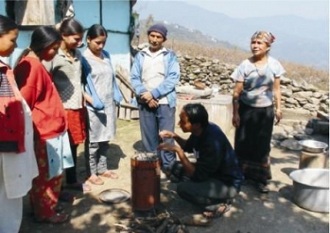Journal of Environmental Protection, 2012, 3, 648-656, July 2012
Unhealthy Cooking and Prevalence of Tuberculosis in Indian Women: A Case Study
Abha Lakshmi Singh, et al.
Unhealthy cooking is one of the major cause of mortality and morbidity and a risk factor for occurrence of tuberculosis among Indian women. India is the TB burden country in the world and accounts for nearly 20 percent of global burden of tuberculosis. The present study establishes the association between unhealthy cooking conditions (use of biomass fuels/chulhas, cooking in multipurpose room, Non-ventilated kitchen, living in kutcha/semi-pucca houses) and preva-lence of tuberculosis in women.
This study is based on primary sources of data collected through questionnaire inter-views from 2101 women respondents belonging to different income categories from Aligarh city. The study examines the socio-economic characteristics, cooking conditions, monitoring of indoor air quality of different types of kitchen locations using different types of fuels.
Symptomatic linkages of tuberculosis with type of fuel use, kitchen locations and house type were analysed. The results show that the women using biomass fuels/chulhas cooking in non-ventilated kitchens and multipurpose room, living in kutcha/semi pucca houses were most prone to tuberculosis.





